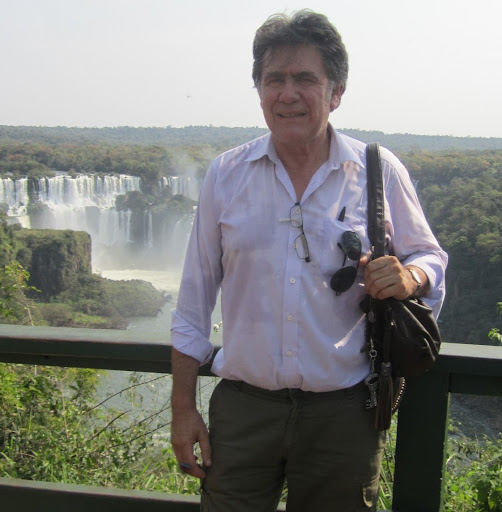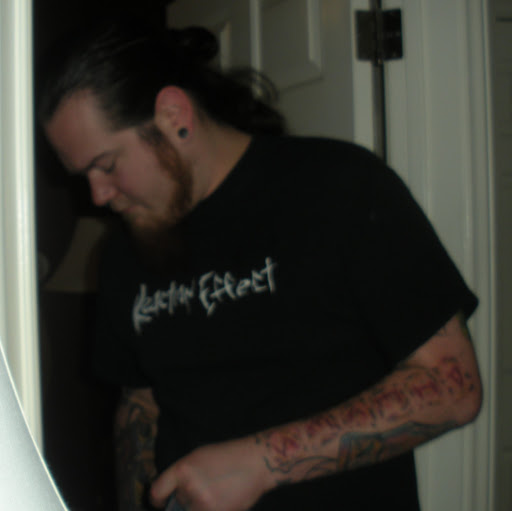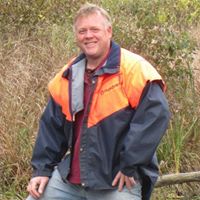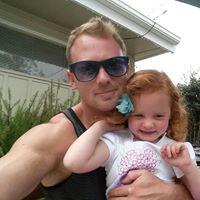Paul Joseph Marcoux
age ~76
from Fort Collins, CO
- Also known as:
-
- Paul J Marcoux
- Paul E Marcoux
- Paul J Marroux
- Phone and address:
-
1401 Cape Cod Cir, Fort Collins, CO 80525
970 227-2109
Paul Marcoux Phones & Addresses
- 1401 Cape Cod Cir, Fort Collins, CO 80525 • 970 227-2109
- Mountain View, CA
- Allenspark, CO
- 550 Inca St, Denver, CO 80204
- Lakewood, CO
- Hays, KS
- Boulder, CO
Isbn (Books And Publications)
-
Dans Le Regard Des Autres: Un Enfant Handicape Parmi Nous
view source -
Author:Paul Marcoux
-
ISBN #:2227318007
Name / Title
Company / Classification
Phones & Addresses
Principal
Precious Little People
Child Day Care Services
Child Day Care Services
367 Santana Hts, San Jose, CA 95128
Resumes

Director Of Finance And Submeter Billing
view sourceLocation:
2600 Michelson Dr, Irvine, CA 92612
Industry:
Real Estate
Work:
Genea
Director of Finance and Submeter Billing
Genea Jan 2017 - Dec 2018
Associate Director of Finance at Genea
Lumen Sv, Llc Oct 2012 - Dec 2012
Consultant
Soccer Shots Oc 2011 - Dec 2012
Sales and Marketing
Sonitrol Orange County Aug 2010 - May 2011
Marketing and Sales
Director of Finance and Submeter Billing
Genea Jan 2017 - Dec 2018
Associate Director of Finance at Genea
Lumen Sv, Llc Oct 2012 - Dec 2012
Consultant
Soccer Shots Oc 2011 - Dec 2012
Sales and Marketing
Sonitrol Orange County Aug 2010 - May 2011
Marketing and Sales
Education:
University of California, Davis 2005 - 2010
Bachelors, Bachelor of Science, Economics The Kings Academy 2005
University of California
Bachelors, Bachelor of Science, Economics The Kings Academy 2005
University of California
Skills:
Marketing
Sales
Social Media
Leadership
Microsoft Excel
Microsoft Office
Salesforce.com
Financial Analysis
Social Media Marketing
Accounting
Management
Customer Service
Account Management
Program Management
Saas
Powerpoint
Business Analysis
Cold Calling
Facebook
Fundraising
Public Speaking
Marketing Strategy
Event Planning
Sales Operations
Product Management
Quickbooks
Sales
Social Media
Leadership
Microsoft Excel
Microsoft Office
Salesforce.com
Financial Analysis
Social Media Marketing
Accounting
Management
Customer Service
Account Management
Program Management
Saas
Powerpoint
Business Analysis
Cold Calling
Fundraising
Public Speaking
Marketing Strategy
Event Planning
Sales Operations
Product Management
Quickbooks

Manager
view sourceLocation:
Fort Collins, CO
Industry:
Semiconductors
Work:
Agilent Technologies 1999 - 2005
Project Manager
Opelin 1979 - 2000
Project Manager
Avago Technologies 1979 - 2000
Manager
Project Manager
Opelin 1979 - 2000
Project Manager
Avago Technologies 1979 - 2000
Manager
Education:
Kansas State University 1970 - 1976
Doctorates, Doctor of Philosophy, Philosophy, Chemistry Villanova University 1966 - 1970
Bachelors, Chemistry
Doctorates, Doctor of Philosophy, Philosophy, Chemistry Villanova University 1966 - 1970
Bachelors, Chemistry
Skills:
Semiconductors
Ic
Asic
Semiconductor Industry
Failure Analysis
Soc
Program Management
Electronics
Cmos
Engineering Management
R&D
Cross Functional Team Leadership
Manufacturing
Mixed Signal
Spc
Characterization
Reliability
Analog
Design of Experiments
Ic
Asic
Semiconductor Industry
Failure Analysis
Soc
Program Management
Electronics
Cmos
Engineering Management
R&D
Cross Functional Team Leadership
Manufacturing
Mixed Signal
Spc
Characterization
Reliability
Analog
Design of Experiments

Paul Marcoux
view source
Paul Marcoux
view source
Paul Marcoux
view source
Paul Marcoux
view source
Paul Marcoux
view sourceUs Patents
-
Process And System For Identifying Wires At Risk Of Electromigration
view source -
US Patent:6857113, Feb 15, 2005
-
Filed:Sep 11, 2002
-
Appl. No.:10/241623
-
Inventors:Jason T Gentry - Wellington CO, US
David D. Balhiser - Fort Collins CO, US
Ronald G Harber - Loveland CO, US
Bryan Haskin - Ft. Collins CO, US
Gayvin E Stong - Fort Collins CO, US
Paul J. Marcoux - Fort Collins CO, US -
Assignee:Agilent Technologies, Inc. - Palo Alto CA
-
International Classification:G06F017/50
G06F019/00
G06F017/11 -
US Classification:716 5, 716703, 716 15
-
Abstract:A method and system of identifying one or more nets in a digital IC design that are at risk of electromigration comprises selecting a manufacturing process for the digital IC design and obtaining a clock period and process voltage. A voltage waveform transition time and effective capacitance is calculated for one or more of the nets. A maximum allowable effective capacitance for each one of the nets is calculated based upon a peak current analysis or an RMS current analysis. The effective capacitance for each net is compared against the maximum allowable capacitance to identify those nets that are at risk of failure due to the effects of electromigration.
-
Method For Making Patterned Implanted Buried Oxide Transistors And Structures
view source -
US Patent:48106640, Mar 7, 1989
-
Filed:Aug 14, 1986
-
Appl. No.:6/896560
-
Inventors:Theodore I. Kamins - Palo Alto CA
Jean-Pierre Colinge - Palo Alto CA
Paul J. Marcoux - Mountain View CA
Lynn M. Roylance - Los Altos CA
John L. Moll - Palo Alto CA -
Assignee:Hewlett-Packard Company - Palo Alto CA
-
International Classification:H01L 2176
H01L 21265 -
US Classification:437 26
-
Abstract:A method for producing buried oxide layers in selected portions of a semiconductor substrate including the steps of applying a patterned mask made from a high-density material over a semiconductor substrate and selectively forming buried oxide layers by oxygen ion implantation. The high-density material of the mask is preferably tungsten, but can also be made from other suitable materials such as silicon nitride. A MOS transistor is made by the process of the present invention by applying the high-density mask material over the gate of the transistor, and forming buried oxide layers by ion implantation beneath only the source region and drain region of the transistor. The completed MOS transistor has the characteristics of reduced drain and source capacitance, reduced leakage, and faster response, but does not suffer from the floating-body effect of MOS transistors made by SOI processes.
-
Method For Fabricating Conductors In Integrated Circuits
view source -
US Patent:45754020, Mar 11, 1986
-
Filed:Feb 13, 1985
-
Appl. No.:6/701270
-
Inventors:Paul J. Marcoux - Mountain View CA
Eileen M. Murray - Yokohama, JP
Hugh R. Grinolds - Yokohama, JP -
Assignee:Hewlett-Packard Company - Palo Alto CA
-
International Classification:B44C 122
C03C 1300
C03C 2506
C23F 102 -
US Classification:156643
-
Abstract:A technique of patterning a conductive layer for interconnections in integrated circuits is disclosed. The technique enables fine line conductors to be fabricated. In accordance with the invention, a pattern for the conductors is etched into the surface of a substrate through the use of a patterned photoresist layer. The conductive layer is then deposited over the photoresist layer and into the pattern etched into the substrate surface. In intervening steps, only the portions of the conductive layer outside the depression of the pattern in the surface are removed; the portions of the conductive layer within the depression remains intact to provide the pattern of fine line conductors desired.
Googleplus

Paul Marcoux

Paul Marcoux

Paul Marcoux

Paul Marcoux

Paul Marcoux

Paul Marcoux
view source
Paul Marcoux
view source
Paul Marcoux
view source
Paul Marcoux
view source
Paul Marcoux
view source
Paul Marcoux
view source
Paul Marcoux
view source
Paul Marcoux
view sourcePlaxo

Paul Marcoux
view sourceSprint

Paul Marcoux
view sourceDana Farber Cancer Institute
Youtube
Flickr
Classmates

Paul Marcoux
view sourceSchools:
St. Patrick School Fall River MA 1964-1972
Community:
Alan Guinen, Paulette Taylor, David Hamilton

Paul Marcoux
view sourceSchools:
Brother Rice High School Bloomfield Hills MI 1962-1966
Community:
Margaret Wischler

Paul Marcoux
view sourceSchools:
St. Norbert Collegiate High School Winnipeg Palestinian Territory, Occupie 1985-1989
Community:
Cindy Penner

J. Paul Marcoux, Mayo Hig...
view sourceGet Report for Paul Joseph Marcoux from Fort Collins, CO, age ~76













